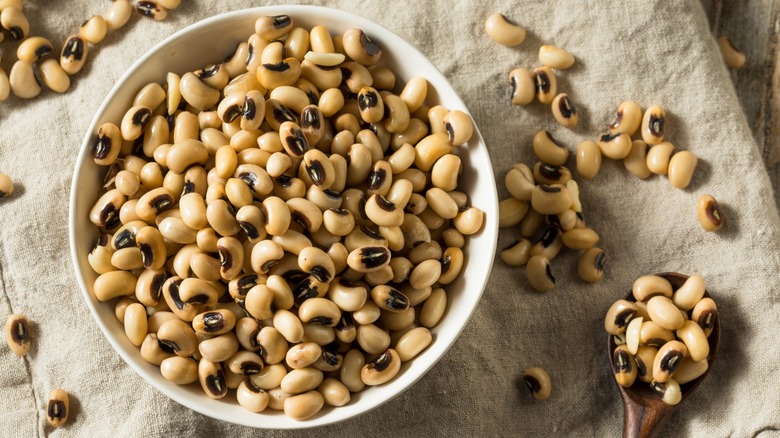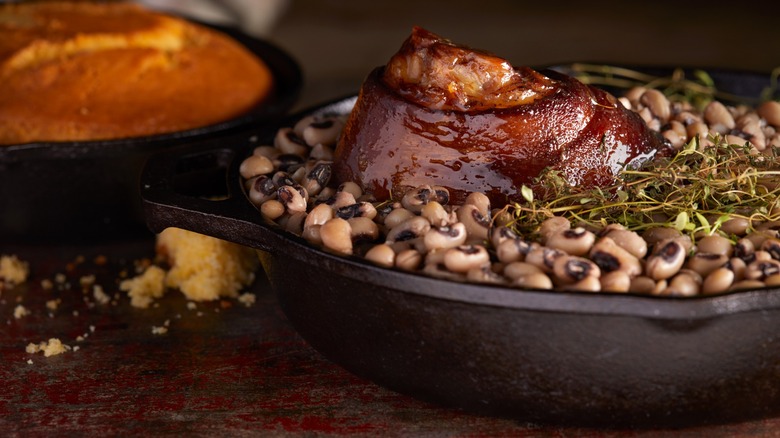The Symbolic Reason Black-Eyed Peas Are Eaten On New Year's Day
As the clock strikes midnight on New Year's Eve, New Year's traditions and superstitions abound worldwide. Cubans dine on roasted pork while Spaniards eat 12 lucky grapes on NYE. In the southern United States, one tradition has stood the test of time for generations: Eating black-eyed peas on New Year's. This seemingly simple black-and-cream colored legume has deep-rooted symbolism and carries the promise of good fortune into the coming year. The useful beans were likely brought to the West Indies and U.S. along with slaves in the 17th century.
As a result, the tradition of eating black-eyed peas on New Year's has its roots in the American South, particularly in African-American culture, but black-eyed peas have been enjoyed by people around the world for hundreds of years. In fact, they are also served for Rosh Hashanah, the Jewish New Year. Still, the legumes' association with good luck and prosperity is believed to have originated during the Civil War era when Union troops confiscated crops and livestock but left black-eyed peas untouched, as they were considered food for animals.
The symbolism behind black-eyed peas is twofold. First, the peas are said to resemble coins, symbolizing wealth and financial abundance in the year ahead. Second, their hearty nature represents resilience and sustenance during challenging times. When you have little to eat, black-eyed peas are good to have because they contain plenty of fiber, protein, and other nutrients. So, by consuming black-eyed peas on New Year's, people hope to attract prosperity and strength into their lives for the year ahead.
Black-eyed peas bring good fortune - and good flavor
Black-eyed peas are eaten as part of many people's New Year's celebrations because they are believed to bring good luck or riches in the coming year. It's not clear exactly why black-eyed peas are associated with money, but one theory is that they get bigger when cooked, which could represent increased wealth. Luckily, these legumes can be prepared in numerous mouthwatering ways, ensuring that there's a delicious option for everyone's taste.
Some prefer to enjoy the simplicity of plain black-eyed peas, cooked to perfection with a touch of seasoning. They're tender, earthy, and a perfect canvas for other traditional New Year's dishes. Hoppin' John is a classic Southern dish made by stewing black-eyed peas with rice, onions, and spices. It's often served alongside collard greens, which represent green paper money, and cornbread, which symbolizes gold. A warm and comforting black-eyed pea soup, sometimes simmered with ham hock or bacon, is another comforting way to kickstart the new year.
The smoky flavors meld with the creamy peas for a delightful treat. No matter how you prefer black-eyed peas, they offer more than just a delicious meal; they embody the hope and promise of a brighter future. So, this New Year's, consider starting your own tradition by savoring the comforting flavors and deep symbolism of black-eyed peas — and may your year be filled with abundance and good fortune!

